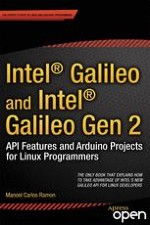Open Access 2014 | Open Access | Buch

Intel® Galileo and Intel® Galileo Gen 2
API Features and Arduino Projects for Linux Programmers
verfasst von: Manoel Carlos Ramon
Verlag: Apress
Open Access 2014 | Open Access | Buch

verfasst von: Manoel Carlos Ramon
Verlag: Apress
Intel® Galileo and Intel® Galileo Gen 2: API Features and Arduino Projects for Linux Programmers provides detailed information about Intel® Galileo and Intel® Galileo Gen 2 boards for all software developers interested in Arduino and the Linux platform. The book covers the new Arduino APIs and is an introduction for developers on natively using Linux.
Author Manoel Carlos Ramon is a member of the Intel Galileo development team; in this book he draws on his practical experience in working on the Galileo project as he shares the team’s findings, problems, fixes, workarounds, and techniques with the open source community. His areas of expertise are wide-ranging, including Linux-embedded kernel and device drivers, C/C++, Java, OpenGL, Assembler, Android NDK/SDK/ADK, and 2G/3G/4G modem integration. He has more than 17 years of experience in research and development of mobile devices and embedded circuits. His personal blog about programming is BytesThink (www.bytesthink.com).